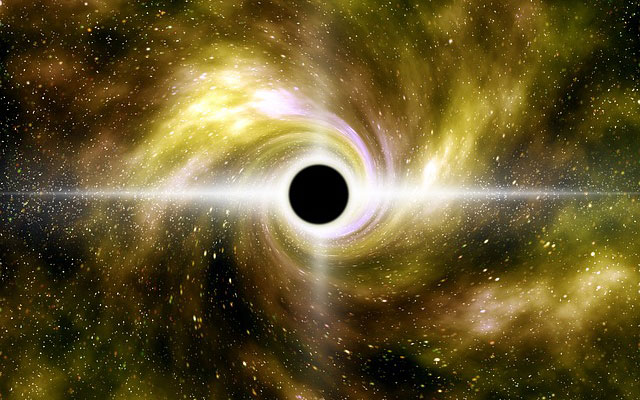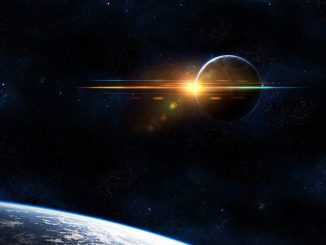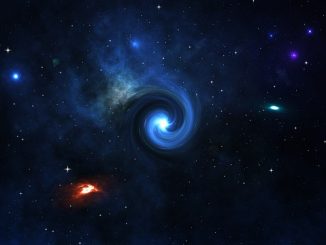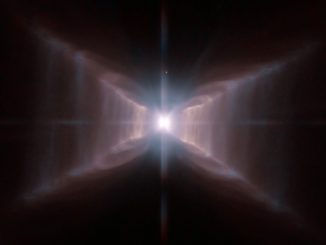
Light travels at the amazing speed of 186,000 miles per second.
At such phenomenal speed, you’d think this type of energy can reach any part of the universe.
Wrong.
There’s a place in the universe where light cannot actually get out. And that place, yes you guessed it, it’s a black hole.
What is a black hole?
Will falling into it really take us to another place and time? Like what we’ve seen on Star Trek where Spock and their enemy Romulan ship ended in the past?
Or, maybe it’s like a quicksand where only death awaits once it swallows you up the way it happens in other fictitious shows?
Well, both ideas are wrong.
First, you would just sink up to your waist when you fall into a quick sand. No farther. That’s because a quicksand’s density is approximately 2 grams per milliliter. Meanwhile, human density is only about 1 gram per milliliter. This means, it will not swallow you up and you can even float on it.
You just find it hard to escape from a quicksand because after its initial liquefaction, its viscosity level increases. The sand and clay becomes very sticky. That’s why the best way to escape a quicksand is to wriggle one’s legs to create space for water to get in and lessen the stickiness or have your friends put in more water into the quicksand to further liquefy it. You can then easily get free.
Now, about the black hole’s possibility of taking you back in time like in Star Trek, scientific experts don’t agree with the cinematic notion. Some of them say that once we get sucked into a black hole, we get to reach the “end of space.” And that’s basically it, as you get eternally trapped in a prison if you like.
However, even if geniuses like Stephen Hawking don’t agree with Star Trek. The theoretical physicist and cosmologist claims a black hole is not really an eternal prison. There’s a way of escaping it. According to Hawking’s equations, black holes eventually leak and evaporate. All the matters and energies that have been trapped in it get re-emitted into the universe as radiation and particles.
Also, it’s not true that a black hole sucks things up and that it’s not a “hole” at all.
According to the National Aeronautics and Space Administration (NASA), “black holes are not really holes at all. They are the opposite of empty! Black holes have the most matter stuffed into the least space of any objects in the universe. Because they are so compact, they have very strong gravity.”
And black holes are not celestial bodies to be scared of.
Some of them are as small as atoms.
The two kinds of black holes
It was Princeton physicist John Archibald Wheeler who coined the term “black hole” in 1967.
Based on his 1999 autobiography, “Geons, Black Holes & Quantum Foam: A Life in Physics,” which he co-authored with Kenneth Ford, retired director of the American Institute of Physics, Wheeler wrote that the black hole “teaches us that space can be crumpled like a piece of paper into an infinitesimal dot, that time can be extinguished like a blown-out flame.”
Hence, a black hole is a mass with an extreme density.
Black holes are generally classified as following:
- Stellar-mass black hole. This is formed when a big star burns up all its fuel and explodes into a supernova. After the explosion, what remains of this star collapses into a super-compact object—a black hole. But for a star to become a stellar-mass black hole must contain 10x as much matter as our Sun.
- Supermassive black hole. This one has one million billion of times as much matter as a stellar-massive black hole. They are usually found at the centers of galaxies, although astronomers are still unsure about their origin. In the Milky Way, we have this kind of phenomenon called Sagittarius A*.
Black holes cannot be seen. Even if a black hole is very near a brilliant star, it remains invisible because it does not reflect light — it absorbs light energy completely.
So, how do scientists know the existence of black holes out there?
Albert Einstein’s theory of relativity has helped in predicting the existence of black holes.
But nowadays there are other ways to detect them indirectly since radiation is emitted before a matter goes through a black hole’s point of no return, also called event horizon.
“If material actually falls into a black hole, it gets shredded apart and it heats up,” explained Roeland van der Marel, a researcher with the Space Telescope Science Institute. “As it heats up, it starts emitting radiation and this radiation we can observe. In particular, we can often see X-rays coming from black holes.”
These x-rays get detected by telescopes positioned in space.
Another way to identify black holes is to study the behavior of objects near it.
“Because a black hole is quite massive, any material, for example stars, that move close to it, will feel a lot of gravity,” van der Marel added. “As a result of this, these stars will move quite fast. So another method of actually detecting the presence of black holes is looking for objects near the black hole that you can actually see that move much faster than you would naively have expected on the basis of the assumption that there would not be a black hole.”
A New Discovery!
Japanese astronomers may have discovered the second biggest black hole in our galaxy!
It is 100,000 times the mass of the Sun which hides in a cloud of lethal gases close to the center of Milky Way. These gases were moving at drastically different velocities, an aspect which puzzled the team of scientists, prompting them to direct the ALMA telescope in Chile’s Atacam desert at the elliptical cloud.
They found out that immense gravitational forces were causing the drastic movement of the gases. Using computer models, the researchers were able to determine that the movement was most likely caused by a black hole. They were also able to determine that this massive black hole is about 1.4 trillion kilometers (870 billion miles) wide.
“This is the first detection of an intermediate-mass black hole candidate in the Milky Way galaxy,” Tomoharu Oka, an astonomer at Keio University in Tokyo, told The Guardian.
The finding is so significant since black holes have been generally classified only as stellar-massive (baby) and supermassive (giant). This intermediate-mass black hole may unravel the mystery of how supermassive black holes are formed.
There’s a popular theory that small black holes become bigger by gobbling one another, and their massive weight compels them to go closer to the center of a galaxy.
According to Oka, and as published in Nature, the new black hole might have originated from the remnants of an ancient dwarf galaxy that’s been swallowed up by Milky Way during its formative period.
If these findings get confirmed, it means our world is now seeing the demise of a galaxy with this intermediate-mass black hole destined to be swallowed eventually by supermassive Sagittarius A*.
Such mysteries of the universe. A new beginning blossoms from the death of another thing. But then, life and existence on Earth work in the same way. And even if people say that change is the only thing constant in this universe, we have the opportunity to see the beauty in all these natural processes. Maybe there really is eternity with these endless unfolding of events. One day we may find the reason why we are here to witness it all.
- Bulenox: Get 45% to 91% OFF ... Use Discount Code: UNO
- Risk Our Money Not Yours | Get 50% to 90% OFF ... Use Discount Code: MMBVBKSM
Disclaimer: This page contains affiliate links. If you choose to make a purchase after clicking a link, we may receive a commission at no additional cost to you. Thank you for your support!




Leave a Reply